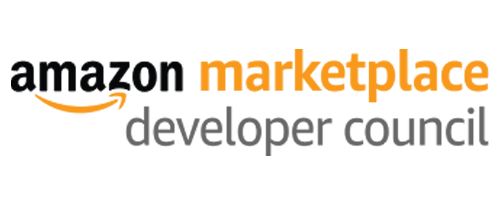One question that online sellers consistently ask us is “How can I use Amazon product advertising to improve product launches?” These same sellers tell us that when they’ve launched products in the past, they’ve tried reaching out to an external audience of loyal brand followers, running sales and promotions, and pitching lots of ad spend at Google and Facebook and Amazon. And the results have been less than optimal, not to mention costly in terms of time, money, and opportunity.
We’re here to take the guesswork out of using Amazon product advertising for product launches and to help you boost your sales and establish your brand faster so you can watch those dollars roll in and see your product climb in ranking.
6 Tips to Help You Launch Your Product Using Amazon Product Advertising
1. Focus on your product listing.
Treat it like your biggest ad space (because it is) and follow Amazon’s listing guidelines and suggestions to the letter. Honestly, this should be the first thing you do whether you’re launching a new product, relaunching a new version of an existing one, or just trying to boost a product’s traction. Creating or updating your product listing carefully, correctly, and completely signifies to the Amazon algorithm that you are a solid seller with a solid product (and that you play by the rules). Remember that the keywords you use in your listing should dovetail with your PPC keywords.
If you really want to create a smart detail page for a product launch, try A+ Content (the merger of A+ and Enhanced Brand Content). If you’ve successfully enrolled the product in Amazon Brand Registry, you have access to this feature that you can turn your listing into a powerful page. You can actually sell more AND build your brand on Amazon. If you aren’t brand registered and you own your brand, registering with Amazon Brand Registry helps protect your products and your brand, and it unlocks access to many beneficial features, especially when it comes to leveling up your Amazon product advertising game.
2. Gather product reviews.
It’s important that you gather product reviews the legitimate, Amazon-compliant way. Again, not technically PPC advertising but an important form of ads nonetheless. Here’s why: the Amazon algorithm, much like human shoppers, favors products with good reviews. It looks for that social proof that your product is quality. Even just a few reviews can sway the algorithm in your favor. But getting reviews can be difficult, no matter how good your product is. Don’t get discouraged if you don’t have reviews though. You can still use Amazon product advertising to launch and reach more people likely to leave reviews. Just be prepared to incur some costs in the process.
In terms of getting reviews, follow-up and compliance is everything. Add Seller Labs Pro’s Communication Center Powered by Feedback Genius to your sales process so you can communicate with your buyers, deliver amazing follow-through customer service, create repeat customers, and build your Amazon brand.
3. Clearly list your product’s key features and benefits.
Get back to the basics and share the value. When you’re using Amazon Advertising to launch a product, it’s always best to go back to basics. Think back to your product. You know its features and benefits. Look at your competition and how they describe their products in their listings. Use these as starting keywords for manual-targeting campaigns within Amazon Sponsored Products Ads. If you really want to go deep and find powerful keywords, try Scope for all sorts of details on which keywords deliver the best results.
Don’t forego automatic campaigns either! Auto-targeting campaigns are a great way to find new search terms for your listings. It’s insight into how Amazon shoppers are searching for your product. As you learn about shopper behaviors, take it back to step one and update your listings based on what shoppers want to see. Now you’re advertising in the listing and in your PPC bids for a one-two punch.
4. Be willing to spend money to make money.
Understand that it’s Amazon and you have to pay to play. Amazon is more likely to favor campaigns with bigger budgets as that increased spending benefits Amazon. That’s not to say that you’ll need to exceed your budgetary comfort zone, but you must be willing to spend money to make money. The same goes with bids. You can use smaller bids on your automatic campaigns, but manually targeting keywords can (and will) be more expensive because you get more control.
Being flexible with spending also helps you gain more data in a shorter amount of time. One way to use collected data to maximize your budget is to use Ignite as your ad-management platform. Ignite offers ad scheduling, which allows you to run ads only when they convert, not when they cost you in clicks that go nowhere.
5. Be patient.
Remember that kicking off Amazon product advertising for a product launch (or for a new brand) takes time. You can’t set up a campaign and expect to see results in a matter of a few days. Check on your campaigns every 2-3 days. Let ad campaigns run for at least 14 days before making any adjustments to them.
And let the data speak. And if you’re not seeing results you’d like for your core keywords, go back to your listing. Work on optimizing it. Look at your search terms and see how customers are shopping for your products.
One of the best tips that our VP of Marketing Jeff Cohen has ever given is to “Build it for who is drawn to it.” He means, don’t tell your shoppers what you think they need to know; build your listing and your Amazon product advertising campaigns around why your product is the best product for them. In essence, don’t build your listing for what the product does, build it around the solution it provides for a problem or inquiry that shoppers have.
6. Clean up and optimize — repeatedly.
The goal of Amazon product advertising is to deliver more value over time. You want to eliminate wasted ad spend. If you have keywords that aren’t converting, move them to a negative match. This will free up that money to be spent on winning keywords. It will also get them out of your line of sight and prevent distraction.
That’s the cycle. Yes, it is a cycle. Shopper trends change all the time. A way that a shopper browses during the holidays is different than when that shopper is browsing out of impulse or necessity (or during a pandemic). Never count an Amazon product advertising campaign as fully optimized or assume that it’s done everything that it can for you. There is ALWAYS room to tighten up and achieve greater profitability, from product launches to product maturity. And remember that Amazon changes each and every day, so don’t cling to the status quo and expect it to work forever.
Use Ignite to help you master Amazon Advertising and get a full suite of additional tools for selling successfully on Amazon. Start your free 30-day trial of Seller Labs Pro today.







